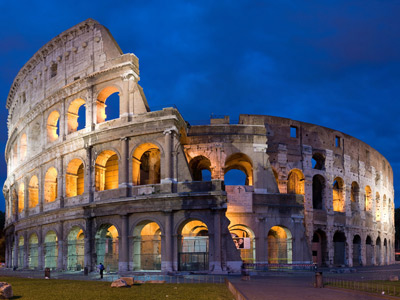How Travertine is Formed?
Travertine is a kind of sedimentary stone that is common in the country of Italy. Travertine Quarry, Tivoli, in Italy, is where the world's largest travertine quarries are found. Like marble, travertine is a form of limestone. When limestone is put under a lot of pressure for a long time ie thousands of years, it can turn into travertine, the way peat turns into coal. If the travertine is left under pressure for thousands more years, it can turn into marble, the way coal can turn into diamonds. So travertine is a kind of stone that is about halfway in between limestone and marble. It’s finer than limestone, but not as fine as marble. Simply travertine is formed when water rich in carbon dioxide suffuses limestone rock.
Ancient Uses of Travertine
The Romans used travertine on the main parts of buildings where it was too expensive to use marble. Often, for instance, the steps might be made of travertine while the columns or sculptures were made of marble, they were prolific builders and architects, and made good use of travertine. The Colosseum in Rome is the largest building constructed of travertine.

How Travertine is Used Today
While the ancients used travertine mainly in blocks as a building material, modern architects and designers generally use travertine as wall cladding for facades. Travertine is a versatile stone that can be used for almost any purpose in the modern home: as floor tiles, shower tiles, wall cladding or counter tops.
High quality travertine tends to be ivory or light beige, although it can come in a range of colors; the surface finish it up to you, since travertine can be polished for a smooth, shinier finish, or left rough and textured.
- Tile Cleaning
- Commercial Projects
- Marble Care
- Ask the Expert
- Contact Us
- Gallery Other
- How is marble formed
- The 7 secrets of Granite
- The 7 secrets of Tiles
- Customer Questions and Answers
- Granite/Quartz kitchen worktops
- Floor Care and Restoration
- Lithofin Shop
- Feedback
- LTP Care products
- Chip Repair In Manchester
- Privacy policy


